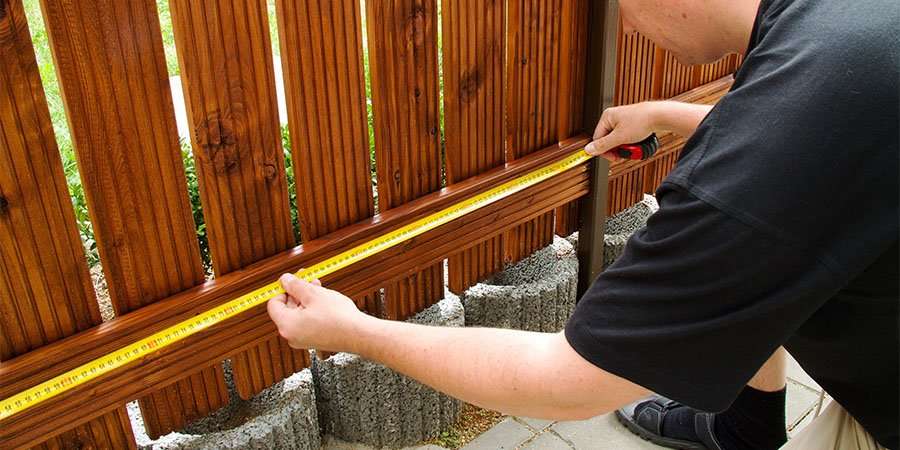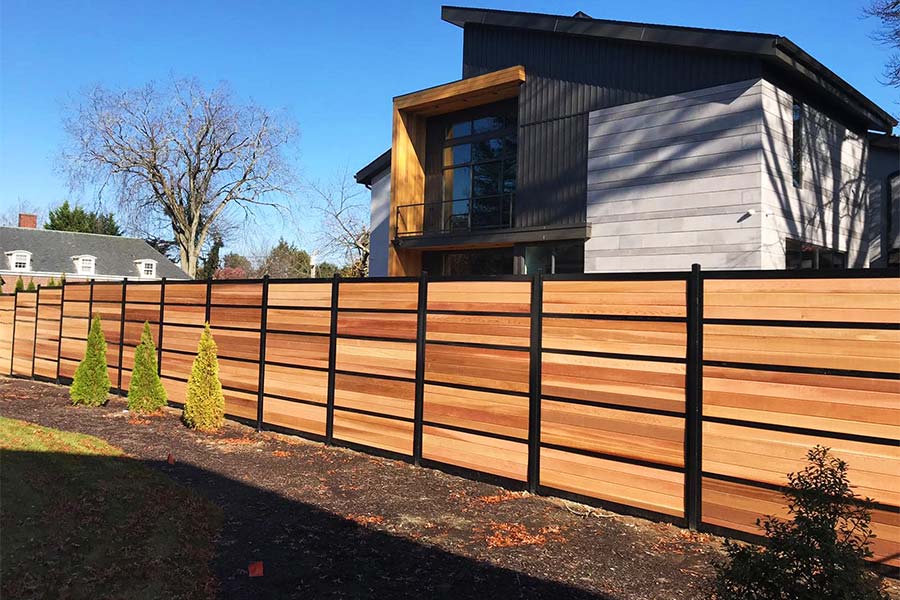All Categories
Featured
Maintaining your fencing is crucial to guarantee its appearance, capability, and durability. Whether your fencing is made of wood, vinyl, metal, or various other materials, understanding its treatment demands will assist maintain it in optimal problem.
![]()
Cleansing: Utilize a pressure washing machine or soapy water with a soft brush to eliminate dirt, mold, and algae. This should be done every year or biannually. Sealing and tarnishing: Apply a sealer or discolor every 2-- 3 years to stop moisture damage and UV fading. Choose a high-quality item ideal for outdoor use. Repair work: Replace warped, deteriorated, or split boards as quickly as possible to prevent further damage. Insect Management: Treat with a timber chemical to secure against termites and various other insects. 2. Plastic Fences. Vinyl fences are popular for their low-maintenance nature yet still need some maintenance.
Cleaning: Wash the fencing with a blend of water and light detergent making use of a soft sponge or fabric. Prevent unpleasant cleansers that may scratch the surface area. Examinations: Inspect for voids or fractures periodically, specifically after storms. Vinyl can become breakable in incredibly chilly climate. Avoiding Discoloration: Remove discolorations quickly. For hard spots, use a vinegar remedy or a vinyl-safe cleansing agent. 3. Chain-Link Fences. Chain-link fencings are practical and resilient, frequently utilized for security and boundary noting.
Corrosion Removal: Examine for rust on a regular basis, especially in seaside or humid areas. Remove corrosion with a cord brush and apply a rust-proof covering. Cleansing: Wash with water to get rid of dirt and particles. Utilize a scrub brush for locations with hefty buildup. Tightening up and Repair Works: Make certain the posts and links continue to be tight. Change harmed areas or equipment as needed. 4. Wrought Iron Fencings. Wrought iron offers an elegant appearance but requires regular interest to avoid corrosion and preserve its finish.
Rust Avoidance: Sand off any corrosion places and apply a rust-resistant primer and paint. This ought to be done each year or as needed. Cleansing: Make use of a light soap solution and a soft fabric or sponge to eliminate dust. Prevent rough chemicals that might damage the steel. Paint: Reapply paint every couple of years to protect the iron and boost its appearance. 5. Light weight aluminum Fences. Light weight aluminum fences are light-weight, corrosion-resistant, and need minimal treatment.
![]()
Cleansing: Usage soapy water and a cloth to cleanse the fencing, rinsing thoroughly to prevent touches. Inspections: Look for loose screws or panels occasionally. Safeguard or replace components if needed. Touch-Ups: Usage paint made for aluminum to cover any chips or scratches, protecting the metal beneath. 6. Composite Fences. Composite secure fencing is constructed from recycled materials, combining the look of timber with better longevity.
Cleansing: Wash with water and make use of a moderate detergent to get rid of dust and spots. Stay clear of rough tools that may harm the composite surface area. Assessments: Try to find indications of bending or cracking, specifically in areas with severe temperature adjustments. Form Avoidance: Tidy mold or mold immediately with a mixture of water and white vinegar. 7. Bamboo Fences. Bamboo fencing is eco-friendly yet more delicate than various other materials.
Cleansing: Use a soft brush with soapy water to tidy dust and particles. Avoid making use of extreme water pressure to protect against splitting. Sealing: Use a water-resistant sealant every 2-- 3 years to secure against climate damage. Repair work: Change broken or broken bamboo poles as required to keep the structure and look. General Maintenance Tips. Trim Greenery: Maintain vines and bushes far from the fencing to avoid wetness accumulation and damages. Seasonal Treatment: In winter months, clear snow buildup from fencings to prevent tension on the structure. In summer, check for sun damage or fading. Normal Assessments: Stroll along the fencing line regularly to examine for loosened hardware, leaning sections, or other signs of wear. Final thought. Regardless of the sort of fencing product, normal upkeep is the key to protecting its feature and aesthetic appeals. Wood fences require one of the most upkeep, while plastic and aluminum require much less initiative yet still benefit from periodic cleaning and assessments. By addressing small problems early and carrying out routine care, you'll appreciate a fence that stays tough and attractive for years to find.

- Wood Fencings. Wooden fences are timeless but call for routine like shield versus climate and insects.
Cleansing: Utilize a pressure washing machine or soapy water with a soft brush to eliminate dirt, mold, and algae. This should be done every year or biannually. Sealing and tarnishing: Apply a sealer or discolor every 2-- 3 years to stop moisture damage and UV fading. Choose a high-quality item ideal for outdoor use. Repair work: Replace warped, deteriorated, or split boards as quickly as possible to prevent further damage. Insect Management: Treat with a timber chemical to secure against termites and various other insects. 2. Plastic Fences. Vinyl fences are popular for their low-maintenance nature yet still need some maintenance.
Cleaning: Wash the fencing with a blend of water and light detergent making use of a soft sponge or fabric. Prevent unpleasant cleansers that may scratch the surface area. Examinations: Inspect for voids or fractures periodically, specifically after storms. Vinyl can become breakable in incredibly chilly climate. Avoiding Discoloration: Remove discolorations quickly. For hard spots, use a vinegar remedy or a vinyl-safe cleansing agent. 3. Chain-Link Fences. Chain-link fencings are practical and resilient, frequently utilized for security and boundary noting.
Corrosion Removal: Examine for rust on a regular basis, especially in seaside or humid areas. Remove corrosion with a cord brush and apply a rust-proof covering. Cleansing: Wash with water to get rid of dirt and particles. Utilize a scrub brush for locations with hefty buildup. Tightening up and Repair Works: Make certain the posts and links continue to be tight. Change harmed areas or equipment as needed. 4. Wrought Iron Fencings. Wrought iron offers an elegant appearance but requires regular interest to avoid corrosion and preserve its finish.
Rust Avoidance: Sand off any corrosion places and apply a rust-resistant primer and paint. This ought to be done each year or as needed. Cleansing: Make use of a light soap solution and a soft fabric or sponge to eliminate dust. Prevent rough chemicals that might damage the steel. Paint: Reapply paint every couple of years to protect the iron and boost its appearance. 5. Light weight aluminum Fences. Light weight aluminum fences are light-weight, corrosion-resistant, and need minimal treatment.

Cleansing: Usage soapy water and a cloth to cleanse the fencing, rinsing thoroughly to prevent touches. Inspections: Look for loose screws or panels occasionally. Safeguard or replace components if needed. Touch-Ups: Usage paint made for aluminum to cover any chips or scratches, protecting the metal beneath. 6. Composite Fences. Composite secure fencing is constructed from recycled materials, combining the look of timber with better longevity.
Cleansing: Wash with water and make use of a moderate detergent to get rid of dust and spots. Stay clear of rough tools that may harm the composite surface area. Assessments: Try to find indications of bending or cracking, specifically in areas with severe temperature adjustments. Form Avoidance: Tidy mold or mold immediately with a mixture of water and white vinegar. 7. Bamboo Fences. Bamboo fencing is eco-friendly yet more delicate than various other materials.
Cleansing: Use a soft brush with soapy water to tidy dust and particles. Avoid making use of extreme water pressure to protect against splitting. Sealing: Use a water-resistant sealant every 2-- 3 years to secure against climate damage. Repair work: Change broken or broken bamboo poles as required to keep the structure and look. General Maintenance Tips. Trim Greenery: Maintain vines and bushes far from the fencing to avoid wetness accumulation and damages. Seasonal Treatment: In winter months, clear snow buildup from fencings to prevent tension on the structure. In summer, check for sun damage or fading. Normal Assessments: Stroll along the fencing line regularly to examine for loosened hardware, leaning sections, or other signs of wear. Final thought. Regardless of the sort of fencing product, normal upkeep is the key to protecting its feature and aesthetic appeals. Wood fences require one of the most upkeep, while plastic and aluminum require much less initiative yet still benefit from periodic cleaning and assessments. By addressing small problems early and carrying out routine care, you'll appreciate a fence that stays tough and attractive for years to find.
Latest Posts
Call Montclare Auto Repair for Assistance - Trusted Service Guaranteed
Published Apr 20, 25
2 min read
Personalized Wealth Administration with WyHy Federal Credit Scores Union
Published Apr 20, 25
1 min read
NAPA AutoCare: Professional Repairs Trusted by the NAPA Warranty
Published Apr 20, 25
2 min read
More
Latest Posts
Call Montclare Auto Repair for Assistance - Trusted Service Guaranteed
Published Apr 20, 25
2 min read
Personalized Wealth Administration with WyHy Federal Credit Scores Union
Published Apr 20, 25
1 min read
NAPA AutoCare: Professional Repairs Trusted by the NAPA Warranty
Published Apr 20, 25
2 min read